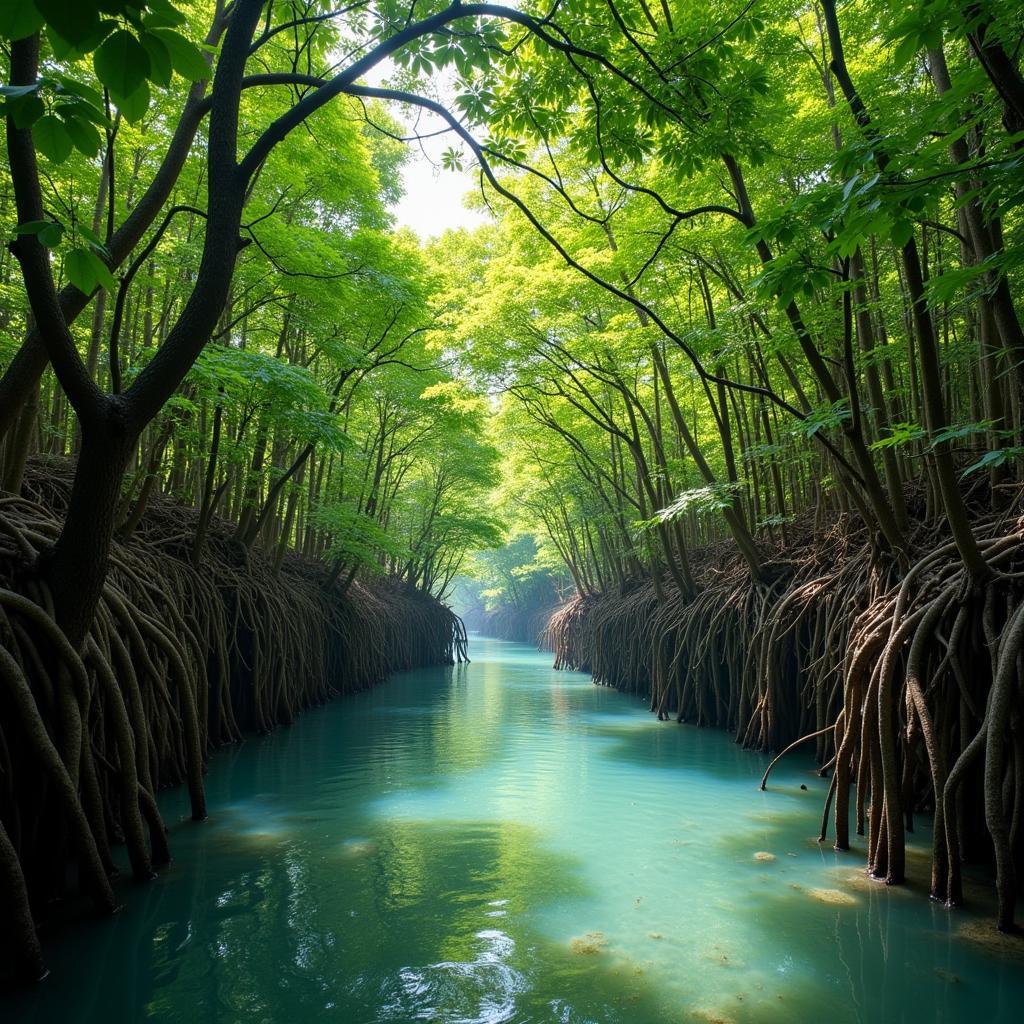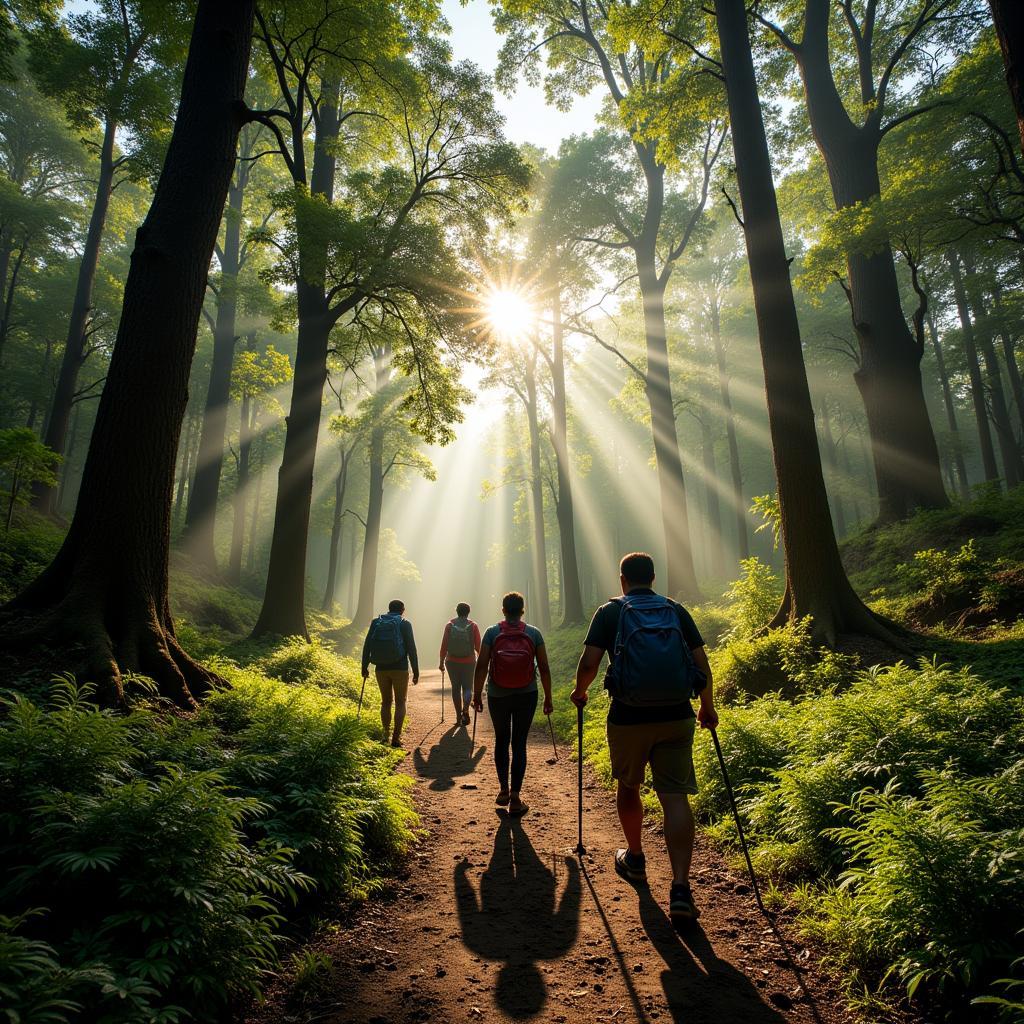Exploring the Majestic African Forests in Tanzania
Tanzania, a land of breathtaking landscapes, boasts a diverse range of ecosystems, from the snow-capped peak of Mount Kilimanjaro to the vast savannahs of the Serengeti. Yet, tucked away amidst these iconic scenes lie the enchanting African Forests In Tanzania, teeming with life and whispering tales of ancient times. These forests, crucial for biodiversity and ecological balance, offer a unique glimpse into the heart of Africa’s natural wonders.
Within Tanzania, these forests vary greatly, ranging from coastal forests to mountain forests, each supporting unique flora and fauna. The Eastern Arc Mountains, for instance, are a global biodiversity hotspot, harboring a wealth of endemic species found nowhere else on Earth. From towering trees draped in epiphytes to delicate orchids blooming in the undergrowth, these forests offer a symphony of sights and sounds. Imagine walking through these verdant landscapes, the air filled with the calls of exotic birds and the rustling of leaves underfoot. These forests are not just a collection of trees; they are living, breathing ecosystems vital to the planet’s health.
After exploring the introductory details of Tanzania’s forests, let’s delve deeper into specific types and their unique characteristics.
Types of African Forests in Tanzania and Their Inhabitants
Tanzania’s forests are as diverse as the country itself. The coastal forests, influenced by the Indian Ocean, feature mangrove swamps and unique plant adaptations for saline environments. Further inland, mountain forests rise towards the sky, offering a cooler climate and sheltering a different array of species. These forests are not static entities; they are dynamic ecosystems constantly evolving and adapting to environmental changes. Did you know that some tree species in these forests can live for hundreds of years, silently witnessing the passage of time and the changes that come with it?
 Coastal Forests of Tanzania
Coastal Forests of Tanzania
The Eastern Arc Mountains: A Biodiversity Hotspot
The Eastern Arc Mountains deserve special mention, as they are recognized as one of the world’s most significant biodiversity hotspots. These ancient mountains, isolated for millions of years, have allowed for the evolution of unique species, including rare birds, amphibians, and plants. Exploring these forests is like stepping back in time, encountering life forms that exist nowhere else on the planet.
The Significance of Forest Conservation in Tanzania
The African forests in Tanzania are under increasing pressure from deforestation, driven by human activities such as agriculture and logging. The loss of these forests has far-reaching consequences, not only for the species that call them home but also for the global climate. Forests play a crucial role in carbon sequestration, absorbing carbon dioxide from the atmosphere and mitigating the effects of climate change. Protecting these forests is not just a local issue; it’s a global imperative.
What animals live in Tanzanian forests?
The forests of Tanzania are teeming with a rich diversity of animal life. From the elusive African golden cat to the more commonly seen monkeys and baboons, these forests provide shelter and sustenance for a wide array of creatures. Birds fill the air with their songs, while insects buzz amongst the undergrowth, creating a symphony of life that echoes throughout the forest.
african golden cat cats africa
Dr. Amani Zuberi, a renowned Tanzanian ecologist, emphasizes the importance of these forests: “The forests of Tanzania are not just beautiful landscapes; they are essential for the survival of countless species and the well-being of local communities. Protecting these forests is crucial for maintaining the delicate balance of nature.”
Experiencing the Magic of Tanzanian Forests
Visiting these forests is an unforgettable experience. Trekking through the lush vegetation, surrounded by the sounds of nature, is a truly immersive adventure. Many national parks and reserves offer guided tours, allowing visitors to explore these magical environments while learning about their importance. Imagine standing amidst towering trees, breathing in the fresh, clean air, and feeling a sense of connection to the natural world. It’s an experience that will stay with you long after you leave.
 Exploring Tanzanian Forests
Exploring Tanzanian Forests
african grasslamds are called ans
Conclusion: Protecting Tanzania’s Forest Heritage
The African forests in Tanzania are a treasure trove of biodiversity and natural beauty. From the coastal mangroves to the mountain forests, these ecosystems play a vital role in the health of the planet. Protecting these forests is not just a responsibility; it’s an investment in the future. By supporting conservation efforts and promoting sustainable tourism, we can ensure that these magnificent forests continue to thrive for generations to come.
FAQ
- What are the major threats to Tanzanian forests? Deforestation due to agriculture, logging, and human settlement are major threats.
- Where can I find information about visiting Tanzanian forests? Information can be found on the Tanzania National Parks website and other tourism resources.
- Are there guided tours available in Tanzanian forests? Yes, many national parks and reserves offer guided tours.
- What types of animals can be found in Tanzanian forests? A wide variety of animals, including primates, birds, reptiles, and insects, inhabit these forests.
- What is the significance of the Eastern Arc Mountains? They are a biodiversity hotspot, harboring unique and endemic species.
- How can I contribute to forest conservation in Tanzania? Supporting conservation organizations and promoting sustainable tourism are ways to contribute.
- What are the benefits of protecting Tanzanian forests? Protecting forests benefits biodiversity, climate regulation, and local communities.
When you need support, please contact us by Phone: +255768904061, Email: [email protected] or visit us at Mbarali DC Mawindi, Kangaga, Tanzania. We have a 24/7 customer service team.

